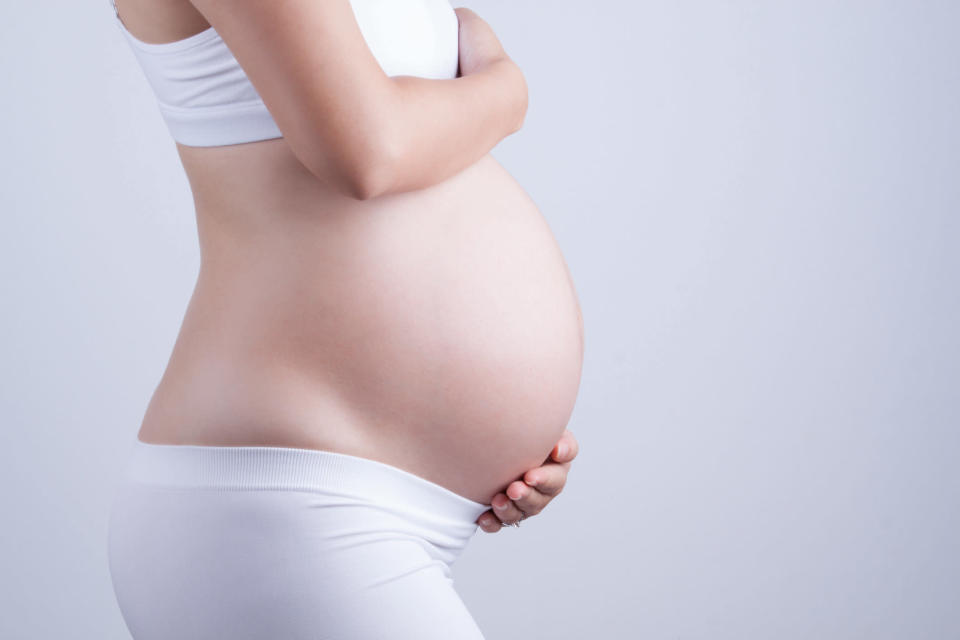What The Health?! Mom with rare double uterus gives birth twice in one month — but how?
Can leftover spaghetti really kill you? Can you actually cough up a blood clot in the shape of your lung? In Yahoo Lifestyle Canada‘s newest series, What The Health?!, we ask doctors to weigh in on odd health news stories and set the record straight. Be sure to check back every Friday for the latest.

A woman in Bangladesh has amazed the international medical community by becoming a new mother of three: the 20-year-old gave birth to twins nearly a month after delivering her first baby.
Arifa Sultana, who’s from the country’s rural Jessore district, gave birth to a baby boy in late February.
Twenty-six days later, she rushed to hospital because of abdominal pain. An ultrasound revealed twins, a boy and a girl, which were delivered via emergency Caesarean section. The healthy babies and their mom were discharged four days later.
How on earth could this happen?
It turns out that Sultana had a condition called uterus didelphys, more commonly known as “double uterus”—as in, the presence of two uteruses.
It’s not as rare as people may think, affecting approximately one in 2,000 women worldwide, according to obstetrician/gynecologist Dr. Beth Taylor, cofounder and codirector of Olive Fertility Centre in Vancouver.
Normally, a uterus is formed during fetal development when two small tubes fuse to form a large, hollow cavity. Sometimes, however, the tubes don’t fully join, and each develops into a separate structure. This can even result in two separate vaginas.
ALSO SEE: What The Health?! Man contracts nasty fungal infection while gardening — but what's the risk?
“If [the tubes] do not fuse, you have a didelphys,” Taylor says. “As a result, neither uterus is fully formed.
“It is almost always diagnosed before pregnancy or in early pregnancy,” she explains. “There are the extremely rare cases that might make it to full term without detection, but in Canada this would be extremely unlikely.”
A double uterus can have a single cervix, or opening, into one vagina, or each uterine cavity may have a cervix, according to the Mayo Clinic. Sometimes, there can be two vaginas. In the latter case, women might first see a doctor because of menstrual bleeding that continues despite the use of a tampon, with blood coming from the second vagina.
Some women with the condition have no symptoms, but pain with menstruation and repeated miscarriages are signs. Another is menstrual bleeding that isn’t stopped by a tampon, with blood coming from one of two vaginas.
Kidney problems could be another clue.
“Uterine anomalies can be associated with kidney abnormalities in the mother since the two systems develop embryologically in parallel,” says Dr. Sonya Kashyap, medical director of Vancouver’s Genesis Fertility Centre.
The cause of uterus didelphys isn’t known, though it can sometimes run in families. It’s usually diagnosed through a variety of tests. In the case of the Bangladeshi woman, she may not have had access to ultrasound before the delivery of her first child, when doctors likely would have caught her second uterus.
ALSO SEE: What The Health?! Man develops near-fatal brain infection after using cotton swab
“In developed countries, it would normally be diagnosed or suspected by ultrasound and confirmed by MRI, laparoscopy, and physical exam,” Kashyap says.
The condition can increase the risk of miscarriage or premature birth. However, women with double uterus often have successful pregnancies.
“A small uterus increases a woman’s risk of miscarriage, fetal growth restriction and early or preterm delivery,” Taylor says. “Indeed, most pregnancies have a happy ending. Risks are increased with didelphys, but there is still reason to be hopeful. Many women will still have a healthy pregnancy with a didelphys — rarely with triplets, though.”
Sultana’s case was somewhat of a medical miracle, with three healthy babies being born without complications.
“I don’t know the specifics of the case but a ‘triplet’ pregnancy of this sort would require a minimum of two eggs to be fertilized,” Kashyap says. “If the female infants were in the same [space] they may be identical from one split egg. If the triplets are all from different eggs or the girls were in the two different sides, three eggs would have been fertilized.”
There’s no specific treatment for the condition, but sometimes surgery is done to remove tissue that separates two vaginas.
“It is usually just managed with close observation during any pregnancy,” Taylor says.
Let us know what you think by commenting below and tweeting @YahooStyleCA!Follow us on Twitter and Instagram.
Check out Yahoo Canada's podcast, Make It Reign — our hot takes on all things royals in a non-stuffy way — on Apple Podcasts and Google Podcasts.


